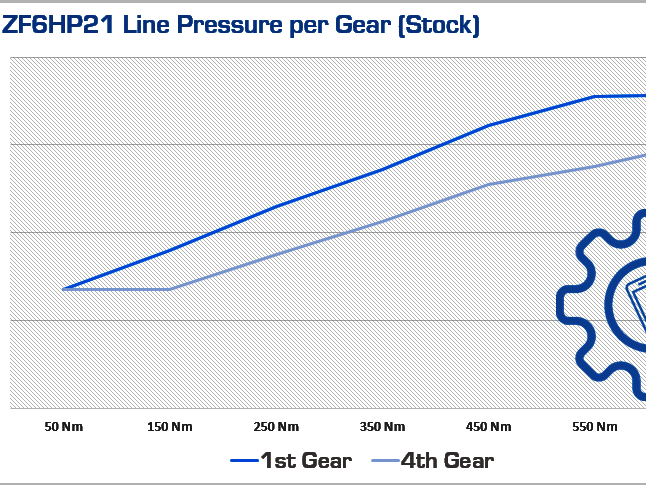... and what this has to do with the durability of your ZF6/ZF8 Auto-Trans!
Auto Transmissions can sometimes play badly with your engine tune, with the outcome of bad shifting, extended slip times, or low torque in certain gears. But why is that?

One of the main inputs for the Transmission to do its job is the engine’s actual torque. Around 50% of the maps in the TCU use actual engine torque (or some stuff calculated from it) as one of its inputs. For example, Line pressure (the base pressure the transmission operates its clutches with) directly relates to engine torque. The higher the torque, the higher the pressure in the trans is, and vice versa (of course, this is limited within certain boundaries).
So, where does it know this "Actual Torque" from? A car hasn’t got a built-in Dyno to measure torque, so it must be calculated somehow during operation. This is the job of the ECU. Simply put, it has various maps to factor the actual load situation (based on fuel delivery, boost pressure, ignition angle, and many more) and output a calculated torque value from that. This torque value is transmitted to all other units via the bus system. One of the most critical units (among others) to use that Torque Value is the TCU, your Transmission Controller.
And here comes the bad news for people tuning their car: All automatic transmissions have "Torque Limits" stored in their TCU. Once the calculated "Actual Torque" breaches the maximum, the TCU will request the ECU to back down, boost, and stay within this limit. Sneakily, those limits are different per gear. For the ZF6HP, the 5th Gear has the lowest value; for the ZF8HP, it's the 3rd and 6th Gear. (sometimes only 6th Gear) The outcome is power loss when one of those gears is engaged (on tuned vehicles).
The standard workaround for tunes to operate correctly and not hit torque limits is to "bend" the torque calculation in the ECU, so it will never calculate a value above the transmission’s stock limits. Problem solved? Well, not really. Given what's said above, the trans will now operate with the wrong clutch pressures. The torque calculation is calibrated to match real-world torque very closely. If you alter this calculation, you create an offset between calculated and real-world torque, directly triggering the transmission to operate with too low line pressure.
The effects can be various and are not necessarily recognized instantly. The 335i F30 makes around 450 Nm at the crank from the factory. With a typical Stage 2 tune, you add 150 Nm, so get 600 Nm at crank. The transmission used is the 8HP45. 45 stands for the suggested max. Torque -> 450 Nm. The electronic limiter sits at 465 Nm, slightly above the stock torque level. Your tuner now adjusts the torque calculation, never triggering this trans limit. The offset between the real world and analysis is 150 Nm or nearly 30%. This means your transmission will operate with approx. 30% lower pressures, as it would with adjusted torque limits and proper torque calculation.
Shifting could be more accurate, timely, and crisp in the short term. This will lead to extended clutch wear over a long time as there is more slip on every shift and even in gear. (Microslip) Adapting the torque limits and using a tune with proper torque calculation will avoid all that AND dramatically increase your transmission’s holding power!
It is essential for people with upgraded Turbos, which are pushing the limits of their platform. The ZF transmissions are incredibly well-built and can last forever, even when operated well above stock torque, as long as they are correctly adjusted.
For our upcoming 8HP solution, people can choose between a standard map, which keeps 90% stock behavior but has the torque nannies adjusted, or the complete solution with many features added.
Stay tuned for more info in the following weeks!
